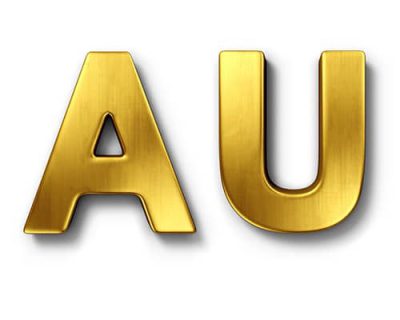
Gold sticking near $1,900, after falling early Wednesday as the dollar held near its highest level in more than two years.
The gains in the U.S. currency are bearish for gold because they make the precious metal more expensive for holders of other currencies. The dollar’s strength is in response to expected aggressive interest rate hikes from the Federal Reserve to combat 40-year highs in inflation. Consumer confidence has taken a hit this month because of the high prices of goods and services, according to data released Tuesday.
Front-month gold futures rose 0.4% Tuesday to settle at $1,904.10 an ounce on Comex, though the June contract decreased 1.6% the first two days of this week. Gold is down 2.6% so far this month after advancing 2.8% in March. It rose 6.9% in the first quarter and retreated 3.5% in 2021. The June contract is currently down $8.10 (-0.43%) an ounce to $1,896.00 and the DG spot price is $1,893.90.
Almost all investors expect the Fed to raise interest rates to a range of 0.75% to 1% at the bank’s early May meeting, according to the CME’s FedWatch Tool. The Fed increased rates by a quarter percentage point to 0.25% to 0.5% in March, in the first rate hike since 2018.
U.S. consumer confidence slipped in April, with the Conference Board’s gauge decreasing to 107.3 from a revised 107.6 in March. The April figure was below the consensus estimate of economists, at 108.2.
In other economic news this week, investors are awaiting U.S. first-quarter GDP and initial jobless claims data on Thursday.
But the gold market is supported by the conflict in Ukraine and the coronavirus-related lockdowns in Asia, because the precious metal is a traditional hedge against uncertainty. Russia is cutting of natural gas supplies to Poland and Bulgaria on Wednesday, worsening the conflict over Ukraine and bringing other countries into the fray.
Front-month silver futures dropped 0.6% Tuesday to settle at $23.59 an ounce on Comex, and the July futures contract declined 3% in the first two days of the week. Silver is down 6.1% so far in April after gaining 3.1% in March. It rose 7.6% in the first quarter after falling 12% in 2021. Silver prices are tied to industrial demand. The May contract is currently up $0.121 (+0.51%) an ounce to $23.665 and the DG spot price is $23.64.
Spot palladium rose 2% Tuesday to $2,221.00 an ounce, though it tumbled 8.1% in the first two days of the week. Palladium touched a record $3,440.76 in March. Russia produces about 40% of the world’s palladium, and Russia’s Nornickel is the world’s largest supplier of palladium. The metal is down 3.1% so far this month after declining 8.5% in March. It gained 20% in the first quarter and retreated 22% in 2021. The DG spot price is in positive territory this morning, currently up $47.00 an ounce to $2275.50
Spot platinum rose 0.7% Tuesday to $931.90 an ounce and fell 0.7% in the first two days of the week. The metal has retreated 7% so far this month after dropping 4.2% in March. It increased 2.9% in the first quarter after losing 9.4% last year. Currently, the DG spot price for platinum is up $9.60 an ounce to $940.70.
Disclaimer: This editorial has been prepared by Dillon Gage Metals for information and thought-provoking purposes only and does not purport to predict or forecast actual results. This editorial opinion is not to be construed as investment advice or as a recommendation regarding any particular security, commodity or course of action. Opinions expressed herein cannot be attributable to Dillon Gage. Reasonable people may disagree about the events discussed or opinions expressed herein. In the event any of the assumptions used herein do not come to fruition, results are likely to vary substantially. It is not a solicitation or advice to make any exchange in commodities, securities or other financial instruments. No part of this editorial may be reproduced in any manner, in whole or in part, without the prior written permission of Dillon Gage Metals. Dillon Gage Metals shall not have any liability for any damages of any kind whatsoever relating to this editorial. You should consult your advisers with respect to these areas. By posting this editorial, you acknowledge, understand and accept this disclaimer.
